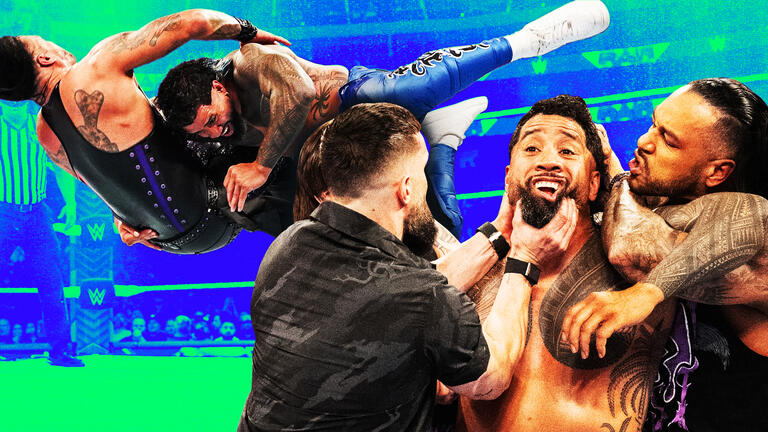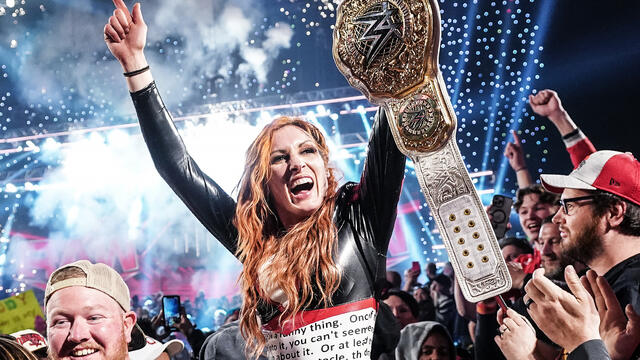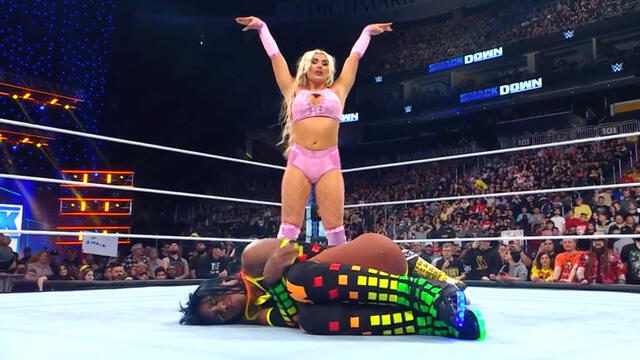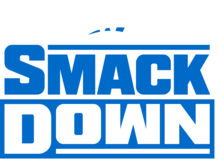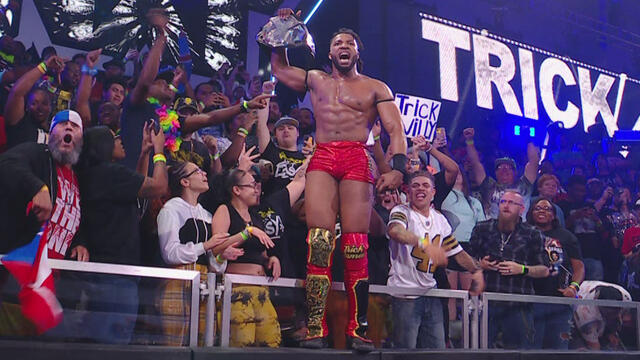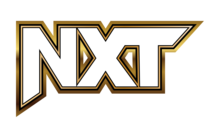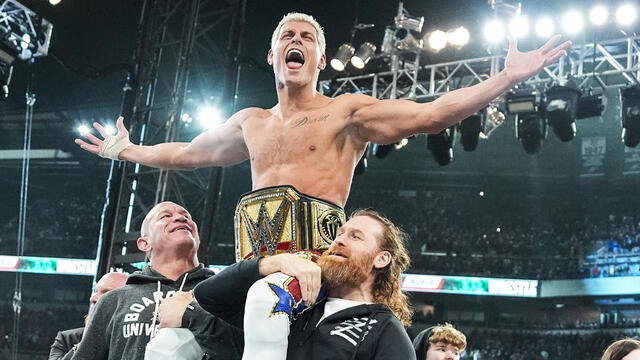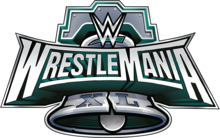
Fire on the mountain: The oral history of Smoky Mountain Wrestling

During the early 1990s, wrestling was in a state of transition. WCW was struggling with management issues, WWE was moving away from Hulkamania’s golden age and the glory days of ECW were still years away. With this upheaval also came the near-overnight disappearance of the territorial era when local stars and fanbases migrated to the increasingly global organizations of WCW and WWE.
Enter Jim Cornette. Bankrolled by an LA-based music genius who produced Eminem’s latest album, the fiery Louisville Slugger founded Smoky Mountain Wrestling as a throwback to what he believed to be the lost art of southern-style rasslin’. The result was a unique Appalachian institution that attracted fans who traveled over the hills on the backs of mules to watch performers like Chris Jericho, Road Dogg, Sunny and a guy called Dirty White Boy. Four years later, it was gone.
What made this small, regional organization so memorable? How did it gain national attention? And why did it close so quickly? Learn the amazing story of Smoky Mountain’s rise and fall from the men who lived it, including an exclusive conversation with Jim Cornette himself, speaking to WWE.com for the first time ever.
The Players:
- JIM CORNETTE – The mastermind behind Smoky Mountain Wrestling is often regarded as one of wrestling’s brightest voices, but remains a polarizing figure. @TheJimCornette, JimCornette.com
- BOB ARMSTRONG – The WWE Hall of Fame patriarch of the legendary Armstrong family performed the role of Smoky Mountain’s commissioner and occasional competitor.
- ROAD DOGG – One of the most popular Superstars during WWE’s Attitude Era, the youngest son of Bob Armstrong got some of his first ring experience in Smoky Mountain. @WWERoadDogg
- LANCE STORM – A highly respected performer and teacher, Storm’s first experience in the United States was in Smoky Mountain. @LanceStorm, StormWrestling.com
- CHRIS JERICHO – The first-ever Undisputed Champion earned broke into the U.S. wrestling scene as a part of The Thrillseekers alongside good friend Lance Storm. @IAmJericho
- D’LO BROWN – The former Intercontinental Champion was fresh out of wrestling school when Cornette placed him with the controversial Gangstas group. @dlobrown75
- TRACY SMOTHERS – A respected veteran and Tennessee native, the man who once wrestled a grizzly bear was Smoky Mountain’s most popular hero and a two-time SMW Champion. Tracy's Facebook
- DUTCH MANTEL – The four-decade ring veteran has competed or produced for nearly every major wrestling organization, and was one of Smoky Mountain’s key broadcasters.
- JERRY LAWLER – The WWE Hall of Famer and longtime friend of Cornette arrived in Smoky Mountain as part of a crossover with the USWA in Memphis. @JerryLawler
Watch Smoky Mountain’s biggest moments | Watch Smoky Mountain’s biggest stars in action
The beginning
“We needed buildings and production companies and TV stations so this eccentric music genius could somehow own a wrestling company in Tennessee.”
JIM CORNETTE: In WCW in 1990, The Midnight Express – Bobby Eaton and Stan Lane – and myself were still there. The company was being mismanaged and we were arguing about our contracts. I was trying to think about wrestling in a positive way, and I had noticed that every time we ran the Civic Coliseum in Knoxville, the crowd would really like it. So I thought to myself, “Well at least Knoxville is still an old-time wrestling town.” I started booking a territory in my mind to keep myself from going crazy.
DUTCH MANTEL: Sometimes the best baseball managers are not the greatest players, but they spend their playing days in the dugout watching the manager manage the game. That’s what Cornette did. He became a serious student of the business. It’s an art. And it’s an art that can be lost.
JERRY LAWLER: Jim Cornette grew up in Louisville watching our Memphis wrestling company. The same show that we would do live in Memphis every Saturday morning would then show the following week in Louisville.
BOB ARMSTRONG: Cornette was a fan club president of mine when I was in Memphis. He wrote an article called “Bob’s Brigade,” and that’s when I first became aware of him. He was just taking photographs.
MANTEL: Cornette started at about 14 or 15-years-old taking pictures. Later on, he turned into Jim Cornette the manager. He broke in under Jerry Jarrett, who, at one time, was one of the most creative guys I knew. Then he studied under Bill Watts, who had a great wrestling mind.
CORNETTE: I met Rick Rubin through Cat Collins, a DJ friend of mine that had worked for Rubin at American Recordings. Rick Rubin was a big wrestling fan and he had just made like $100 million from CBS Records. He liked southern territory wrestling, wild stuff, big heat, that type of thing. I pitched him the idea of starting a wrestling company, because I had an idea of where we could do it. That was the genesis. I spent all of 1991 going back and forth to California to talk with Rick.
MANTEL: The wrestling business was in transition at the time. All the mom and pop promotions were dropping like flies.
CORNETTE: Nobody knew what the hell we were doing because we weren’t talking with any wrestlers. We could get them last. We needed buildings and production companies and TV stations so this eccentric music genius could somehow own a wrestling company in Tennessee.
D’LO BROWN: [Cornette] was a good character and a good entertainer, but he also knew TV stations, syndication, how to book venues and how to promote. It was eye-opening to see that other side of him.
CORNETTE: I got a building rent free and made two TV pilots, which ended up being show No. 1 and No. 2. We used those shows to go to stations to sell a wrestling TV show. We were trying to be a little more serious than the colorful world of WWE. We wanted to get away from “sports-entertainment.”
CHRIS JERICHO: Jimmy was a great wrestling mind for that area. The most important thing about wrestling is know your audience and Cornette really knew that southern area. Tennessee, Kentucky and all those places that we used to go to, he really knew what people wanted to see there and he was really smart with it.
MANTEL: The style was what they now call “old school.” Telling a story doesn’t have an era. Either the story is good or the story is not good. And the stories were good in Smoky Mountain.
LANCE STORM: It was clean-cut. The good guy wore the white hat, the bad guy wore the black hat. There were zero shades of gray. It’s very obvious and straight-forward. You can take five minutes for the villain to pull the hair and the crowd would get really upset about it. The hero is going to be very much Clark Kent, straight and honest. It was more about the moral high ground than the action.
CORNETTE: We got Knoxville straight off the bat on the Fox station on Sunday mornings, and we also got WCYB, which was the NBC affiliate in the Tri-Cities – Bristol, Kingsport, Johnson City. The signal up in those mountains went 100 miles in almost any direction. Cable was not that widespread, a lot of people used antennas in the hills. We also got WYMT in Hazard, Ky., so we had eastern Kentucky covered, too, with those three stations. And that ended up as our territory.
ROAD DOGG: We worked high school gyms in small towns, but they were always packed and they were always the best fans. To some of them, it wasn’t just entertainment. They take their rasslin’ very seriously. They’re very vocal about who they like and who they dislike. There were a lot sliced tires and keyed cars. Jim Cornette had to fight his way out of more than one of those towns.
ARMSTRONG: One time, [my son] Scott and I were trying to find a building. We passed this guy who had killed a deer. The deer was strapped up and he was cutting it open at the gut. We got lost in the mountains, came back and he was giving the meat to kids. And I don’t know where the kids came from, there were no houses. Those Appalachian people are a little bit different than everybody else.
TRACY SMOTHERS: They were hillbillies. It’s simple as that. There’s a difference between country people and hillbillies and they were bona fide hillbillies. They could get pretty rowdy.
MANTEL: Up there in eastern Kentucky and northern Virginia, you’re back in the hills, buddy. You’re in those Appalachian Mountains. I used to say on commentary, “A lot of these people have never left this town.” Bob Caudle would say, “What do you mean?” I’d say, “Because they don’t have a Rand McNally road map to know how to get out of this place.”
LAWLER: There were some backwoods fans, rednecks and coal miners that would come over from Virginia. These were people that would get involved. It would get scary.
CORNETTE: This woman in Barbourville, Ky, grabbed Tammy [Sytch] and dragged her on the gym floor by her hair and wrists, determined to drag her out of the back of the building. She was a huge cornfed farmwoman and Brian Lee was trying to save Tammy without hurting her.
ARMSTRONG: One time, we were out back and we saw, over the hill, came an old mule. Two kids were on the mule, they rode up, got off, slapped him on the ass, and he went back over the hill and the kids came to the wrestling match. I don’t know how they got home. They rode their mule to the wrestling matches. That’s how they got there in Smoky Mountain.
The local heroes
“I worked with my dad in a Loser Leaves Town Match dressed up as a ninja.”
CORNETTE: Tracy Smothers was the epitome of the perfect Smoky Mountain hero. He was legitimate. Where else could a good ole country boy from Springfield, Tenn., like Tracy Smothers have people cheer for him? He had people screaming during a Chain Match in Pikeville, Ky., population: 6500. He was tailor-made for the region.
STORM: Tracy Smothers was so much fun to be around. He and The Rock ‘n’ Roll Express together showed how much fun a locker room can be if you don’t take yourselves too seriously. Tracey worked so darn hard. Every night he went out there and busted his hump. He knew how to work the people, because he was a southern boy and catered to that crowd.
MANTEL: When you take the demographics into consideration, Tracy fit it perfectly.
ARMSTRONG: Tracy actually pinned a bear and the guy who owned the bear came to me the next day and said, “Please tell Tracy to take it easy on my bear.” He was a fantastic wrestler.
Watch The Rock 'n' Roll Express battle The Heavenly Bodies in a Loser Leaves Town Steel Cage Match
SMOTHERS: It was originally going to be Steve [Armstrong] and I together to work a program with The Heavenly Bodies, but Steve got a job with WWE. I was just by myself and The Rock ‘n’ Roll Express came in to go against The Bodies, but Jim needed a good guy to go against Dirty White Boy.
CORNETTE: [Dirty White Boy] was the perfect villain for the territory from the start. People knew him, he could talk and knew how to work the style. After a while, he became a great fan favorite. He talked like one of the people because he was one – a plumber from east Tennessee. I think he was the longest tenured roster member. He started with us and was there when we closed.
Watch Dirty White Boy sneak up on Dutch Mantel in a scrapyard
SMOTHERS: In 1993, Dirty White Boy burned the rebel flag in a trash can while I was handcuffed. At Bluegrass Brawl in Pikeville, Ky., Dirty White Boy and I had a Chain Match and a member of the Ku Klux Klan showed up at my merch table. He had all the rebel gear on, and the son had it on, too. He asked, “What are you doing May 26?” And he showed me a paper for a Klan rally. I’m a country boy, but that was too much. He had about 20 guys there sitting ringside. I had a police officer keep an eye on them while I took care of White Boy in the ring.
ARMSTRONG: Great, great wrestler. A lot of experience. Anything you wanted Dirty White Boy to do, he was there to do.
SMOTHERS: He carried a pistol on him at that time. He really did. He never went out to any bars on the road.
MANTEL: I used to tell some of the guys in the locker room, “The crowd is aggressive towards you because you might be the biggest stars they’ll ever meet.” Rock stars don’t play concerts back in those hills.
ARMSTRONG: Brian Lee was great with us.
CORNETTE: Brian Lee was playing the part of Brad Armstrong. I wanted Brad Armstrong in that spot from the start, but he’s one of the only ones I couldn’t get from WCW. Brian had worked in Memphis and had a lot of potential. He was green and learning, but when he switched to a villain, teamed with Chris Candido and was managed by Tammy, he did a lot better work. I liked Lee with Candido a lot more than I liked Lee as a hero.
ROAD DOGG: Brian Lee was a great wrestler, a big good-looking guy and had a lot of talent. It wasn’t by accident that he became next in line.
Watch a Tammy Sytch manage Brian Lee in a Coal Miner's Glove Match
CORNETTE: Buddy [Landel] should’ve been a top level performer in one of the big companies, but never got a shot because Buddy was his own worst enemy.
STORM: I absolutely love Bob Armstrong. He was such a class act. He was used as a star of yesteryear that still had it in him and had the crowd on the edge of their seats the whole time. He knew those people so well, what they wanted and when they needed it.
CORNETTE: “Bullet” Bob was one of the most important parts of Smoky Mountain from the start. He was a retired wrestling legend and talked better than anyone on the roster. I knew we could get him back in the ring after someone pushed him too hard, which likely would be me.
ROAD DOGG: My dad was already getting up there in years and there were a lot of young guys, so he became the commissioner. Dad knew what Jim wanted and Jim knew how Dad was going to act out there. It was a match made in heaven.
ARMSTRONG: I was commissioner, so Jimmy and I were always at each other’s throats. When we finally had a wrestling match together, it sold out Knoxville Civic Center. I couldn’t believe it.
CORNETTE: Scott [Armstrong] wrestled under a mask as Dixie Dynamite. He unmasked himself when I called him out for being ashamed of his father. The next spring, I beat him in a cage with a tennis racquet and sent him to the hospital and Scott came back with Steve, his other son, and then we did this big Lumberjack Match.
Watch Cornette go too far in his verbal attacks on the Armstrong family
ROAD DOGG: I wanted nothing more than to go there and wrestle because my family was there. It was exciting to be just getting out of the military and getting my start in wrestling. The whole time I was there, traveling with my dad and brothers and getting my foot in the door of the industry, it was all a really memorable experience for me.
CORNETTE: The last one to come was young Brian [aka Road Dogg]. Brad has his old Badstreet costume from WCW, which we turned inside out, put on Brian and called him The Dark Secret.
ROAD DOGG: Jim Cornette gave me the name The Dark Secret, because it was a dark secret that the Commissioner’s son was the one under the hood. That’s Jim in a nutshell. He’s a creative genius bordering on insanity, which is the best kind of genius.
ARMSTRONG: I got to wrestle with all four of my sons at one time or another while Smoky Mountain was going on.
ROAD DOGG: Once my skills were improving and could carry the Armstrong name, I started wrestling as Brian Armstrong and tagging with my brothers. One time, before I took the hood off, I worked with my dad in a Loser Leaves Town Match dressed up as a ninja. I hit him with a pair of brass knux and he had to leave town.
CORNETTE: He’s an Armstrong. They can all wrestle.
Destined for Superstardom
“We knew they were going to be stars. They were heartthrobs.”
CORNETTE: We would get VHS tapes from wrestlers who wanted to come to Smoky Mountain. I got this tape from a guy called Lance Storm who I saw leaping from the top rope and cutting these great dropkicks. And the kid Chris Jericho he was with wasn’t too bad either.
STORM: I told Jericho that I was talking to Jim Cornette about going to Smoky Mountain. Jericho was working in Mexico and Japan at the time and he thought Smoky Mountain would get his foot in the door in the States. Smoky Mountain was a big tag team territory and Cornette asked if we’d be willing to come in as a team.
Watch The Thrillseekers' amazing video package including riding bumper cars and at a petting zoo
JERICHO: He flew us to Knoxville from Calgary. He had a big show that night at the Knoxville Civic Center. It was sold out with like 5,000 people. He wined and dined us to impress us with the biggest show they had and we were just super excited about it. Of course, 90% of the shows were in small little towns and rec centers and community clubs.
CORNETTE: I had to get Lance paperwork to work in America. Chris had dual-citizenship. But we knew they were going to be stars. They were heartthrobs.
STORM: We were always trying to push a little further in the ring and Jim was trying to pull us back. In hindsight, considering where we were, Jim was right. Chris was really moving too fast for small towns in Kentucky. Smoky Mountain Wrestling was very much southern rasslin’. It was a personality-driven territory.
JERICHO: Our style was completely insane. They used to call us the flying squirrels and mean it. We were working so fast and doing all these high spots. It took a while to get ingratiated into the style of being slowed down.
STORM: Jericho was still going back and forth to Mexico and Japan, so he was going 100 miles an hour in one territory and 10 in the other.
JERICHO: When you’re in front of 200 people, there’s no need to do a dive over the top rope to the floor. In Kentucky, you get the same reaction with a hiptoss or a slap to the face.
CORNETTE: I met [Chris] Candido and his girlfriend, who were teenagers, in New Jersey. He had a good match, was a great kid, came to eat ribs with us and I liked the way he carried himself. I offered Chris and his girlfriend Tammy to come to Knoxville. She was still in school, and stayed in school at UT while she was working for me.
STORM: I got married literally the day before I moved to Smoky Mountain and my wife ended up renting an apartment in the same apartment complex as Chris and Tammy. We trained together, sat by the pool, went to dinner, went to the movies. My wife and I became really great friends with them.
Watch Smothers battle Chris Candido in an early Ladder Match
SMOTHERS: Some of the best matches I’ve ever had were with Chris. He was so knowledgeable, dedicated and determined. He had so much heart and loved wrestling more than anybody I’ve ever met.
STORM: Chris worked every single night like it was WrestleMania. It didn’t matter if we had 112 people in Pikeville, Ky.
CORNETTE: I had visited my friend Cat, who was touring with Danzig. There was an opening act where a guy came out in a skirt, combat boots, piercings and was spitting on the fans. It was Marilyn Manson before he got famous. I said, “Now there’s a gimmick.” These two guys with tattoos had been The Masked Spiders in New Jersey. I didn’t like the masks, but I liked their work. They had been bugging me to come down to Smoky Mountain, so I said, “You’ve gotta wear dresses.” You could’ve heard a pin drop. That became The Headbangers.
BROWN: Balls Mahoney had just gotten hired to be Boo Bradley in Smoky Mountain, but he didn’t have a driver’s license, so he was asking around for someone to drive him from New Jersey to Knoxville, Tenn. We drove all night and he said in exchange for driving him down he would talk to Cornette about giving me a match. Cornette said, “Kid, you got eight minutes. Show me what you got.” I guess he liked what he saw because I started working for the company two weeks later.
CORNETTE: I had made a deal for Eddie Gilbert to come in January 1995 and Dutch had said he had this big guy in Puerto Rico. I thought it would be great if we paired Eddie, this cocky little guy who could talk, with this big enforcer guy that we called Unabomb. Eddie left without telling me, so I needed a cocky guy to be Unabomb’s partner. Al Snow was working in Ohio and northern Kentucky, so I called him up and Al jumped at the chance.
Watch a young Al Snow take on Brad Armstrong for the Smoky Mountain Title
BROWN: We had what was called the “Smoky Mountain Flophouse” in Morristown, Tenn., close to Cornette’s house. There were about nine guys living in this house. It was me, New Jack, Mustafa, Unabomb, Chris Jericho lived there at one point, Balls Mahoney and another kid who was Little Snot Dudley in ECW.
CORNETTE: We ran shows in Marietta, Ga., we’d use some of the local promoter’s guys and there was New Jack. He could talk like crazy. Mustafa couldn’t say sooey if the hogs had him, but looked like he could break you in half. The OJ car chase had just happened and Rodney King a few years before that, so I came up with The Gangstas from South Central LA.
BROWN: My first night, I worked a match with Tracy Smothers in the opener as AC Conner and then in the main event I dressed as one of The Gangstas. In the same night, I went from being me to being D’Lo. I took the nickname of a high school friend.
CORNETTE: D’Lo Brown was a CPA, had a good job, but he quit and moved to Knoxville to be in the wrestling business. He was the best performer of the three of them, so I made him their posse member. They had such heat. People didn’t just want to see them get their @$$es kicked, they didn’t want to see them period. People were scared of them.
BROWN: I was scared out of my wits of New Jack. He was just intimidating. Mustafa is 6-foot-5 or 6-foot-6, he was impressive as well, but New Jack just had this look about him. The way he spoke, it was just like, “Wow. This is somebody you have to worry about.”
Watch The Gangstas address The Undertaker from a southern graveyard
ARMSTRONG: They were completely different. Fans didn’t know how to take them. They built a lot of heat. Being commissioner, they knocked me out and painted an “X” on my back.
BROWN: Straight heat. Not wrestling heat. It was real life, “We hate you, go away, don’t be here” heat. Fans had rallies for us not to come to town and paid to see us lose. That’s why it was cutting-edge and ahead of its time. That’s not something southern America in 1994 was probably ready for. I don’t think America in 1994 was ready for it.
The Smoky Mountain style
“Rick wanted a mummy.”
CORNETTE: Rick Rubin only came to Smoky Mountain shows once. People knew my friend Cat Collins and were asking, “Who’s that bum hanging around with Cat?” I drove him to Nashville to produce the Johnny Cash album and I got to eat lunch with Johnny Cash. [Rubin] would call me at three in the morning, I’d hear the latest main event playing the background and we’d talk about cool wrestling.
SMOTHERS: He never came back to the dressing room. He always sat in the crowd. But if there was ever anything wrong with the paychecks, he’d make it good.
CORNETTE: In one of my late night phone calls with Rubin, he said, “I think we ought to have a mummy. The Mummy was cool.” I said, “I loved The Mummy, too. In 1974, The Mummy was fantastic, but I was 12 and times have changed.” But Rick wanted a mummy. “Just give it a try,” he said. He was paying. What was I gonna do?
Watch the infamous and controversial Prince Kharis in action
ARMSTRONG: You have to show southern fans you know what you’re doing and The Mummy made it really hard to do that. His talent was great, but the fans didn’t know exactly how to take him.
CORNETTE: Rob Mazzie was 6-foot-8 and 300-something pounds. I asked him if he wanted to be a mummy and he drove to South Carolina so we could make the suit out of giant rolls of gauze and tape. Eventually, he was walking around in a full body cast. We put baby powder on him so if he was dropkicked, dust would fly out.
SMOTHERS: I was there the night Kevin [Sullivan] cut up [W*ING] Kanemura. When Kanemura came backstage from the ring, I couldn’t believe what I saw. It was pretty crazy.
CORNETTE: Kanemura came in from Japan to work a show for us in 1993. Sullivan got at him with this spike, and we had to censor it because it was so gross.
ARMSTRONG: It was really bad. I had never seen a cut that deep. And that created a lot of controversy. Kevin opened that guy to the bone.
CORNETTE: I couldn’t believe the sight of it. It didn’t mean anything for the average Smoky Mountain Wrestling fan, but it was the tape traders that were the ones watching this stuff because they knew who Kanemura was.
ROAD DOGG: I wrestled the late, great Chris Candido in a Baby Bonnet Match where he had lost and had to wear a baby bonnet until he won another match. I, as The Dark Secret, lost to him so he could take the baby bonnet off. You’re not going to see that in Madison Square Garden, I can assure you.
Watch Candido wrestle in a baby bonnet
STORM: We were brought in for the Sunday Bloody Sunday show, which was Terry Funk vs. Bob Armstrong. It was the night Terry Funk did his first-ever top rope moonsault and I think he was 50 at the time.
ROAD DOGG: Terry Funk stacked about 40 chairs in the middle of the ring. He beat up my dad and put him down on the chairs and went to do a moonsault off the top. My dad moved and Terry just ate the chairs. They were close to 60-years-old at the time and he was doing moonsaults off the top into those chairs.
ARMSTRONG: You never knew what he was going to do next and I always had to be on my best. I didn’t want to eat very much, because he’d push you to your limits. I bought a whole package of Peanut Butter crackers and that’s all I ate all day.
CORNETTE: At The Night of Legends show in ‘94, The Heavenly Bodies were coming back from WWE to wrestle [Jericho and Storm]. Jericho asked me if he could go in the ring to practice some stuff. Later, Mark Curtis came running up to me saying, “Jericho went to the hospital. They think it’s broken, but he’ll be back.”
STORM: It was one of the most amazing matches I’ve ever been involved in, in that it never should have been that good. It probably never should have happened, considering Chris broke his arm earlier that afternoon and needed surgery.
ARMSTRONG: The guy has more guts than I ever thought. That really raised my opinion of him right there, when he did that.
STORM: Chris was trying to do a Shooting Star Press, bailed on it and landed as if he was trying to do a dropkick off the top rope. He rolled out of the ring and had a weird look on his face. I knew something was wrong. I looked at his arm and there was a dent where one bone was supposed to be and he could bend his forearm in the middle.
CORNETTE: The following day, he needed surgery on his arm.
STORM: Jericho made the show and just had a plastic splint on his arm. We did the match and it had a crazy emotion to it.We were wrestling against WWE Superstars and founding members of Smoky Mountain Wrestling. It was a really big deal and Jericho did more than he should have.
The rise and fall
“I didn’t want it to get to a point where I owed talent money.”
CORNETTE: Bruce Prichard from WWE called me and asked if The Heavenly Bodies and I wanted to come for a few shows. It was a good chance to get promoted on national television, but I was afraid that if I showed up, people would think I was leaving Knoxville and it would hurt shows, so Bruce got Vince to agree that we could mention Smoky Mountain on WWE TV.
SMOTHERS: That was different. Nobody really did that back then – have wrestlers from all these different promotions come in. People had never seen it before. It was special.
CORNETTE: We led up to a World Tag Team Title Match against The Steiner Brothers at SummerSlam. Then we got The Steiners to come have rematches in Smoky Mountain. WWE – for the first time ever – acknowledged another wrestling promotion.
Watch the big Steiner Brothers vs. Heavenly Bodies match at SummerSlam 1993
LAWLER: I went to Knoxville and beat Dirty White Boy for the Smoky Mountain Title as a part of a crossover with the USWA in Memphis. I had wrestled in Knoxville many times before, but it had been a while since I’d been back. When I went to Smoky Mountain, it was totally different than what I remembered Knoxville wrestling being like. Under Cornette, it was fresh and exciting.
Watch "The King" in Smoky Mountain against Dirty White Boy
BROWN: I’ll never forget the whole buildup when The Undertaker came down for a couple of shows and we were going to wrestle in a Six-Man Tag Team Match. The Undertaker walked out and I’m like, “Wow, oh my God, I’m about the wrestle The Undertaker.” You can feel the people breathing. That’s how full the place is. That memory will always stick with me.
CORNETTE: We had a deal with the CBS affiliate in Roanoke, Va. They were carrying WWE’s “Superstars,” so they aired us from 11:00 to noon and aired “Superstars” from noon to 1:00 and asked people to vote for which program to keep. They voted for ours, but WWE stayed on the air anyway.
MANTEL: The business had morphed. That was a crossover time in wrestling where WWE and WCW were getting ready to go head-to-head and a lot of the regional promotions had folded. What Smoky Mountain was trying to do was to find that market. And, for a while, they were successful in doing that.
CORNETTE: Until April 1995, we were doing fairly well. We were running 15 towns a month from three strong TV tapings, but we couldn’t get into the Asheville or Lexington markets or get a better timeslot in Chattanooga. Wrestling was not popular in America. We got to the point where we were too small to be big, but too big to be small. We cut all the expenses that we could cut, but I had pride.
JERICHO: He would micro-manage it. If Cornette gave up some of the reigns to Sandy Scott or Mark Curtis, they probably could have taken care of some stuff. But Cornette wanted to have a hand in everything.
SMOTHERS: Sometimes the pressure would get to him and he’d just snap. I’ve seen him destroy rings. If he was seven-foot and 300 pounds, he’d kill 20 people. Jimmy has a temper.
MANTEL: Jimmy has a short fuse. He has a bad temper and sometimes he lets it get the best of him. But when Jimmy’s on his game, he’s very intense and wants it done right.
ARMSTRONG: He worked himself to death. Jimmy did it all. He worked hard, was smart, but he’s just pretty much a control freak.
BROWN: The thing I really think about is when Jimmy went to WWE, he split his time and focus, and obviously he’s putting most of his thought and input into WWE. That’s when Smoky Mountain started to become less important.
MANTEL: What held Smoky Mountain back was their markets were too small. Knoxville was their biggest market, but it’s not a big enough market to sustain a wrestling company.
STORM: Like ECW, Smoky Mountain was too big to be small and too small to be big. It’s hard to make your product seem impressive enough when you’ve got WWE and WCW to compete with. It wasn’t big enough to take that next step.
ROAD DOGG: Money has definitely got to be one of the big factors. From what I understand, Jim paid really well. It’s hard to compete with Vince McMahon and the machine. People can watch it on Monday night for nothing, so it’s hard to get people to come out and pay to see you, especially in the towns and smaller venues we were running.
CORNETTE: Rubin was working with Mick Jagger, The Red Hot Chili Peppers, The Black Crowes and Johnny Cash and he got behind on watching the TV shows. He wasn’t able to sit and enjoy his wrestling company. It was obvious that he was saying as long as we broke even, we could do whatever we wanted. We were far away from breaking even and it wasn’t getting any better. I didn’t want it to get to a point where I owed talent money. Thanksgiving and Christmas had been a big time of year for us, but when Thanksgiving weekend in 1995 earned us less than it had the previous year, I knew it was inevitable to halt things.
BROWN: [Smoky Mountain] was like my first year in college. Learning when to do things, why to do them and getting the crowd to react the way you want. Being around veterans who had been there, done that, they were willing to share what they had learned. The Rock ‘n’ Roll Express and Tracy Smothers could give you an education you can’t get in the ring. I pay those lessons forward now.
STORM: It was the time where I realized that it’s more about the people in the seats than it is about the people in the ring. It doesn’t matter what kind of match I prefer, I have to deliver the kind of match that the people who bought the tickets want. I started listening to my audience and trying to engage them rather than trying to entertain the fan that I was.
JERICHO: The thing I really learned a lot about there was interviews. I wasn’t very good at them at the time. Who is after two or three years in the business? Even though those guys were very white meat and cliché, I learned from Bob Armstrong, Dirty White Boy, Tracy Smothers and The Rock ‘n’ Roll Express. I learned how to perform a basic, good guy interview and get some personality and charisma involved as well. It was an invaluable experience.
ROAD DOGG: I got to travel with my family, do what I love to do and be with the people I love. It was a great time for me. It was my proving grounds and learning period. When you see guys later in a WWE locker room, there’s an instant connection that you did time in the territory together. It’s a camaraderie that’s not relevant exclusively to Smoky Mountain.
CORNETTE: All the talent in Smoky Mountain either got their big opportunity later, like Al Snow, Candido or Unabomb, or already had their opportunity, such as The Rock ‘n’ Roll Express and Bob Armstrong. They were either already established stars or were guys that went on to become stars.
ARMSTRONG: I was getting on up in age. I live 500 miles away from Knoxville, but we’d go up and stay until the matches were over and then drive home. Having my sons with me, it was a great family experience and one of the greatest experiences of my life. It lasted almost five years and I’ll never forget it.
WWE Shows Latest Results
SmackDown results, April 19, 2024: Tiffany Stratton introduces Bayley and Naomi to Tiffy Time with a sneak attack
Full ResultsNXT Spring Breakin' 2024 Week One results: Trick Williams slays The Mad Dragon to become NXT Champion
Full Results







